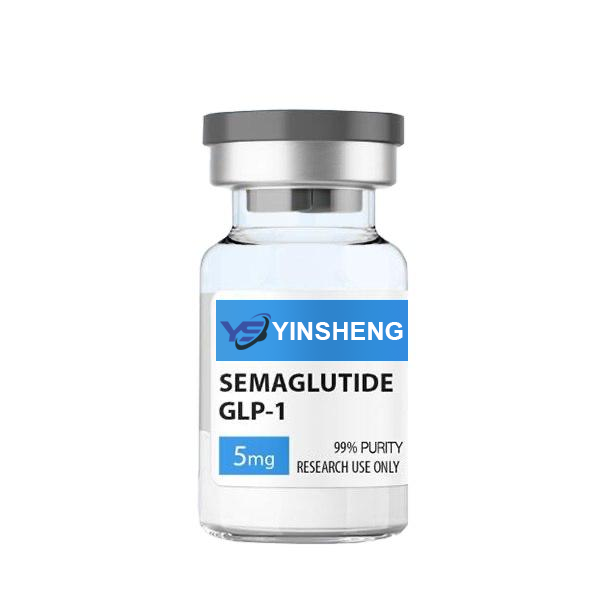Personlized Products New Product Weight Loss Artifact High Purity CAS 910463-68-2 Semaglutide
Name: Semaglutide
Specs: 2mg/vial*10vials/box 5mg/vial*10vial /box 10mg/vial*10vial/box
Price: 2mg USD70/box 5mg USD100/box 10mg USD200/box
Lab: Lianfu Bio
MOQ: 1 box
Semaglutide is a medication used to treat type 2 diabetes. It belongs to the class of drugs known as glucagon-like peptide-1 (GLP-1) receptor agonists. Semaglutide works by stimulating the release of insulin and reducing the production of glucagon, which helps to lower blood sugar levels in people with diabetes.
Semaglutide is available in both injectable and oral forms. The injectable form is administered once a week, while the oral form is taken once daily. The medication is typically used in combination with diet and exercise to improve glycemic control in adults with type 2 diabetes.
In addition to its blood sugar-lowering effects, semaglutide has been shown to promote weight loss in people with obesity. It works by reducing appetite and food intake, leading to a decrease in body weight over time.
Clinical studies have demonstrated the efficacy and safety of semaglutide in managing type 2 diabetes and obesity. Common side effects may include nausea, vomiting, diarrhea, and abdominal pain. However, these symptoms often improve over time as the body adjusts to the medication.
Overall, semaglutide is a valuable treatment option for individuals with type 2 diabetes and obesity, offering the dual benefits of improving blood sugar control and supporting weight management. It is important to consult with a healthcare professional to determine if semaglutide is the right choice for your specific medical needs.
What is semaglutide?
Semaglutide belongs to a class of medications known as glucagon-like peptide-1 receptor agonists, or GLP-1 RAs. It mimics the GLP-1 hormone, released in the gut in response to eating.
One role of GLP-1 is to prompt the body to produce more insulin, which reduces blood sugar (glucose). For that reason, health care providers have used semaglutide for more than 15 years to treat Type 2 diabetes.
But GLP-1 in higher amounts also interacts with the parts of the brain that suppress your appetite and signal you to feel full. When used in conjunction with diet and exercise, it can cause significant weight loss — and a reduced risk of cancer, diabetes and heart disease — in people who are obese or overweight.
| jintropin | hygetropin | AOD9604 | Hcg | HGH fragment | CJC-1295 |
| TB-500 | BPC-157 | PT-141 | Retatrutide | semaglutide | Tirzepatide |
| CHRP-2 | CHRP-6 | Melanotanll | peg-mgf | oxytocin | lpamorelin |
| MGF | DSIP | Sermorelin | Hexarelin | Gonadorelin | Selank |
| Epithalon | Tesamorelin | Triptorelin | igf lr3 | follistin 344 | GHK-CU |
| dihexa | adipotide | Kisspeptin | semax | MOTS-C | NAD |














